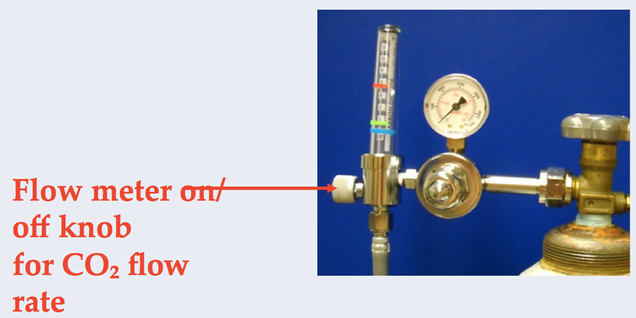How Much Does It Cost to Put Down a Rat
"Euthanasia" is a term meaning "good death".
The goal of euthanasia is to provide a rapid, painless, stress-free death. Carbon dioxide (CO2) overdose causes rapid unconsciousness followed by death. The CO₂ flow rate should displace 30% to 70% of the cage volume per minute.
Exposure to CO2 without removing animals from their home cage is a rapid and humane method of euthanasia, because the animals are not stressed by handling or being moved to a new environment.
Exposure to CO2 can cause deep narcosis that can appear to be, but is not, death. In such cases, animals that superficially appear to be dead may eventually awaken; this arousal can occur after the disposal of carcasses into refrigerators or freezers. Presumed death after exposure to carbon dioxide must be confirmed based on careful assessment of the animal for unambiguous signs of death, such as cardiac arrest or fixed, dilated pupils. CO₂ narcosis must be followed with secondary method of euthanasia (i.e. cervical dislocation, thoracotomy, etc.).
Definitions
Euthanasia: derived from the Greek terms eu meaning good and thanatos meaning death. A good death is the humane termination of an animal's life.
Bilateral thoracotomy: Incision of both sides of the chest cavity to cause the lungs to collapse
Cervical dislocation: method that severs the spinal cord in the neck
Exsanguination: method of withdrawing blood from the body
Decapitation: method of using a guillotine or sharp pair of scissors to severe the head at the atlas/axis joint of the neck
Standard Size Caging
| Cage | size | Flow rate | |
| A | Static Rat | 10" x 19" x 9" | 19.6 Liters/minute |
| B | Lab Products IVC Mouse | 8" x 13" x 5" | 6.0 Liters/minute |
| C | Static Mouse | 7" x 11" x 5" | 4.6 Liters/minute |
| D | Allentown IVC Mouse | 7.6" x 5.1" x 15" | 6.7 Liters/minute |
| E | Opti-Mice IVC Mouse | 1.9cm x484 cm^2 | 4.4 Liters/minute |

Flow rate calculation
If a standard size cage is not used the flow rate needs to be calculated using the formula below. This calculation provides 50% displacement, but anywhere from 30-70% is permitted.
To Calculate flow rate:
- Length x width x height of cage in inches = total cubic inches
- 1 liter = 61.02 cubic inches
- Divide total cubic inches by 61.02 cubic inches = liters
- Displace 50% of cage volume per minute
- Multiply cage size in liters by 50 percent = flow rate
Procedure
Step 1
Euthanasia apparatus are found in the procedure rooms, specific animal rooms, satellite labs, or necropsy rooms of each facility. Bring the animals, in their home cages, to the CO₂ euthanasia apparatus found in the room.
Step 2
Do not overload the cage. The Housing and Cage Density Policy must be followed at all times. Five mice per cage maximum and for other species, only two per cage under 500 grams or one per cage for animals larger than 500 grams.
- 5 mice per cage maximum
- Animals less than 500 g: no more than two per cage
- Animals greater than 500g: 1 per cage
Do not leave surviving animals in the presence of animals to be euthanized.
Animals from different cages should not be combined: This causes extreme stress and is at odds with the goal of euthanasia.
In some cases, the animals may need to be placed into a standard-size cage to be euthanized. If the home cage is not used, the chamber should be emptied and cleaned between uses.
Step 3
Determine cage size and the lid size needed. Pick the correct size lid for cage. Calculate the flow rate or refer to posted signage at euthanasia station for standard cage sizes.
Remove the filter top from the cage, and cover the cage with the stainless steel euthanasia lid.

Step 4
Ensure that the tubing from the CO2 tank is properly attached to the lid via the Quick-connect valve. The quick-connect works by pulling back on the ring round the valve, not by screwing it on.

Step 5
CO2 regulator and flow meter
H Cylinder Setup: Large Tank
- Euthanex model #M1-320-12FM

E Cylinder Mobile Setup
- Euthanex model #HP
If using the large cylinder H tank, turn the large knob. If using the small cylinder mobile station (E tank) turn the key on top of the CO2 tank to turn on the CO2 flow.
Step 6
Turn on tank and check volume. A full tank has 2000 PSI.
Turn on the flow of CO2 to the cage by using the flow meter attached to the pressure regulator. Adjust flow meter to correct setting according to the cage size.

Step 7
Expose the animals to CO₂until complete cessation of breathing is observed for a minimum of 2 minutes (a total of approximately 5 to 10 minutes may be required). Visually inspect the animals for the absence of movement and respiration.
Step 8
Death must be assured by subsequent use of a secondary form of euthanasia. The following methods as secondary methods to ensure euthanasia after CO2 asphyxiation: cervical dislocation (under 200 grams), bilateral thoracotomy, removal of multiple organs for tissue procurement, exsanguinations. Quickly decapitate all pups with sharp scissors.
Note: Newborn pups (up to 7 days old) are highly resistant to CO2, and require at least 4-5 minutes of exposure, followed by a physical means such as decapitation to ensure death.
Secondary Physical Methods
(CO2 is the primary method of euthanasia)
- Cervical dislocation (used for animals for under 200 grams)

- Bilateral thoracotomy (used for animals larger than 200 grams)
- Incision of the chest cavity to produce a "pneumothorax" (collapsed lung) and cessation of respiration
- Decapitation
- Exanguination
Step 9
At this point, if you have another cage to euthanize, repeat steps 3-8.
Step 10
When all cages of animals are euthanized, turn the flow meter to zero and the tank control knob off, and return the lids to their racks.
Step 11
Be sure to check again that all animals have been euthanized completely before securely double-bagging them in plastic bags. Excess bedding is not to be placed in the bag.
Step 12
Complete Euthanasia label and affix label to the carcass bag.
Step 13
Place the carcass bag in the facility cooler. Return the empty dirty cages to the dirty cage wash area.
BU IACUC Institutional Animal Care and Use Committee IACUC oversee... Approved October 2008, Revised May 2019
CO2 Euthanasia Procedure
How Much Does It Cost to Put Down a Rat
Source: https://www.bu.edu/researchsupport/compliance/animal-care/working-with-animals/euthanasia/carbon-dioxide-euthanasia-for-rats-and-mice/